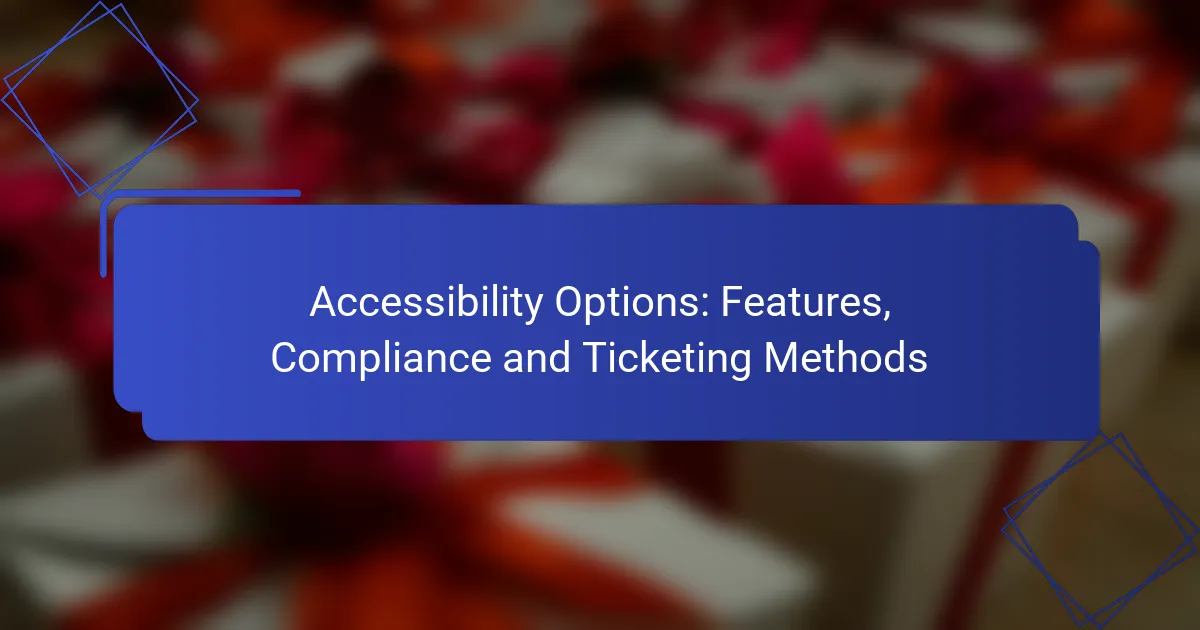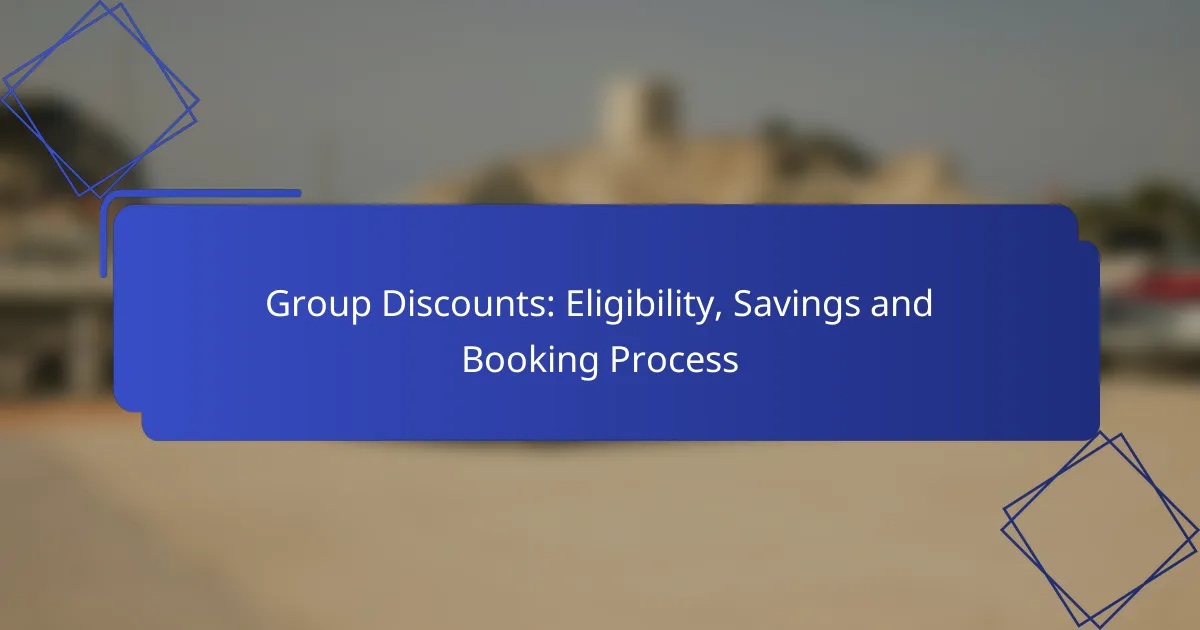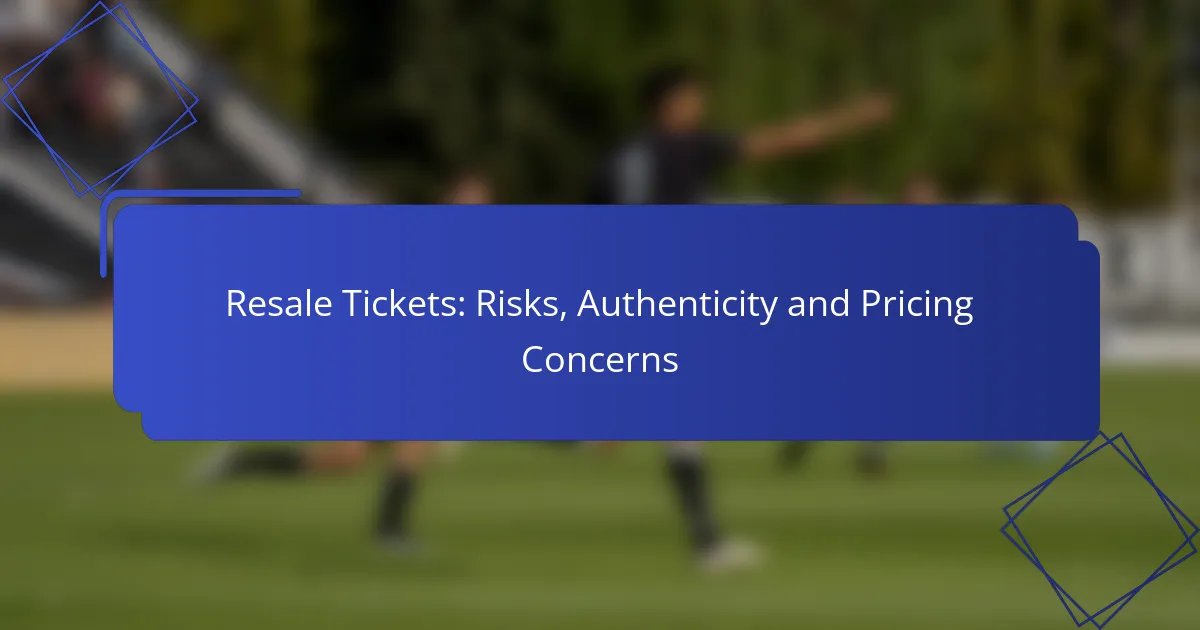Accessibility options for events are essential in creating an inclusive environment for all attendees, regardless of physical abilities. These options encompass features such as wheelchair access, assistive listening devices, and accessible seating, while compliance regulations ensure that venues meet necessary legal standards. Additionally, accessible ticketing methods facilitate the purchasing process for individuals with disabilities, ensuring they can fully participate in events.
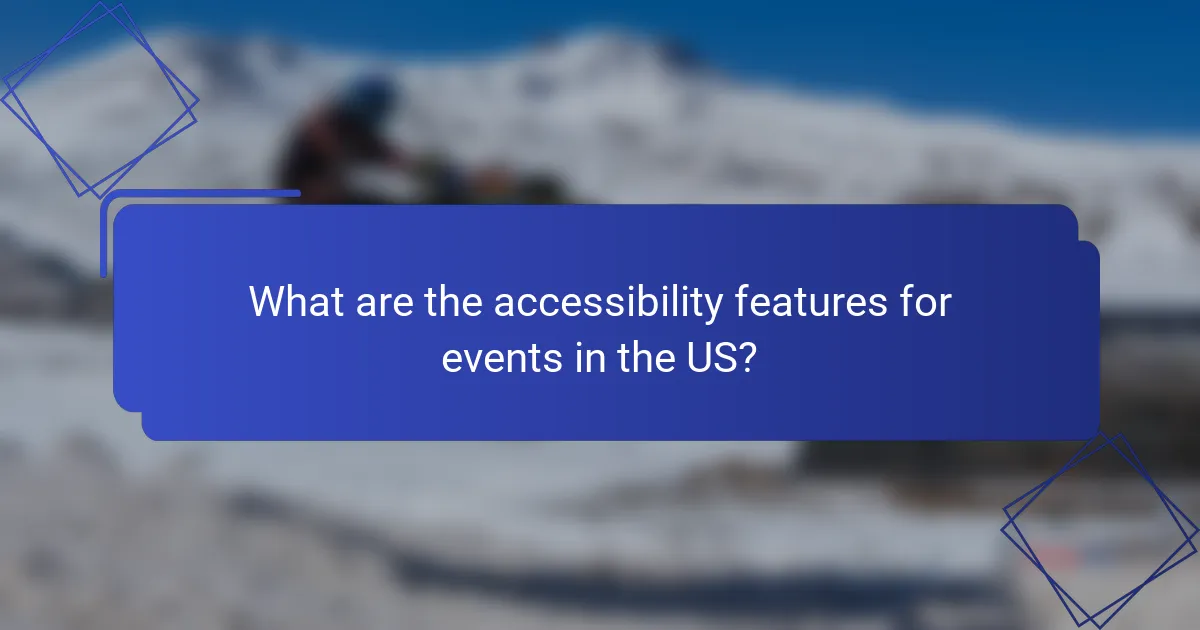
What are the accessibility features for events in the US?
Accessibility features for events in the US are designed to ensure that all attendees, regardless of their physical abilities, can participate fully. These features include various accommodations such as wheelchair access, assistive listening devices, and accessible seating options, which help create an inclusive environment.
Wheelchair access
Wheelchair access is a fundamental feature at events, ensuring that individuals using wheelchairs can navigate venues safely and comfortably. This includes ramps, elevators, and designated pathways that are free of obstacles. Event organizers should verify that all areas, including restrooms and seating, are accessible.
When planning an event, it’s crucial to assess the venue’s compliance with the Americans with Disabilities Act (ADA) standards. Consider conducting a walkthrough to identify any potential barriers that may hinder access.
Assistive listening devices
Assistive listening devices (ALDs) enhance sound for individuals with hearing impairments, allowing them to enjoy presentations and performances. These devices may include FM systems, infrared systems, or induction loop systems that transmit sound directly to hearing aids or headsets.
Event organizers should provide information on the availability of ALDs in advance and ensure that staff are trained to assist attendees in using them. It’s also beneficial to have a limited number of devices available for on-site use.
Sign language interpretation
Sign language interpretation is essential for making events accessible to individuals who are deaf or hard of hearing. Qualified interpreters can convey spoken content in real-time, ensuring that all attendees can follow along with presentations and discussions.
When hiring interpreters, consider their experience and familiarity with the event’s subject matter. It’s advisable to book interpreters well in advance and provide them with any relevant materials to prepare for the event.
Accessible seating options
Accessible seating options are crucial for ensuring that individuals with mobility challenges can enjoy events comfortably. This includes designated seating areas that provide adequate space for wheelchairs and companions, as well as clear sightlines to the stage or performance area.
Event planners should clearly communicate the availability of accessible seating during ticket sales and ensure that these seats are reserved for those who need them. It’s also helpful to have staff available to assist attendees in finding their seats.
Visual aids
Visual aids, such as large print programs, braille materials, and captioning services, enhance accessibility for individuals with visual impairments. Providing these aids helps ensure that all attendees can access important information about the event.
When preparing visual materials, consider using high-contrast colors and clear fonts to improve readability. Additionally, offering digital versions of materials can provide flexibility for attendees who may require screen readers or other assistive technologies.
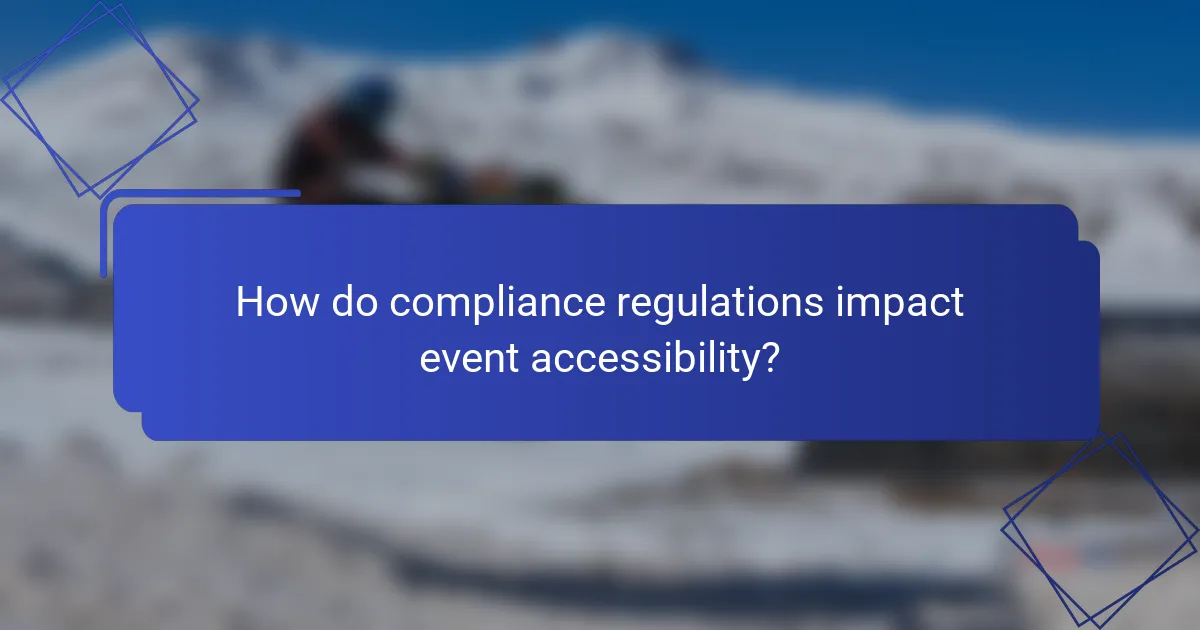
How do compliance regulations impact event accessibility?
Compliance regulations significantly influence event accessibility by establishing legal requirements that venues must meet to accommodate individuals with disabilities. These regulations ensure that events are accessible to all attendees, promoting inclusivity and preventing discrimination.
Americans with Disabilities Act (ADA)
The Americans with Disabilities Act (ADA) is a key regulation that mandates accessibility in public spaces, including event venues. Under the ADA, venues must provide reasonable accommodations such as wheelchair ramps, accessible seating, and appropriate signage to assist individuals with disabilities.
Event organizers should familiarize themselves with ADA requirements to avoid legal repercussions and ensure a welcoming environment. Regular audits of venue compliance can help identify areas needing improvement and facilitate necessary adjustments.
Accessibility guidelines for venues
Accessibility guidelines for venues typically include standards for physical access, communication, and services. These guidelines often cover elements like parking spaces, entrances, restrooms, and emergency exits that must be accessible to all attendees.
To enhance accessibility, venues should implement features such as assistive listening devices, braille signage, and clear pathways. Organizers can consult resources like the ADA Standards for Accessible Design to ensure compliance and create an inclusive experience for all participants.
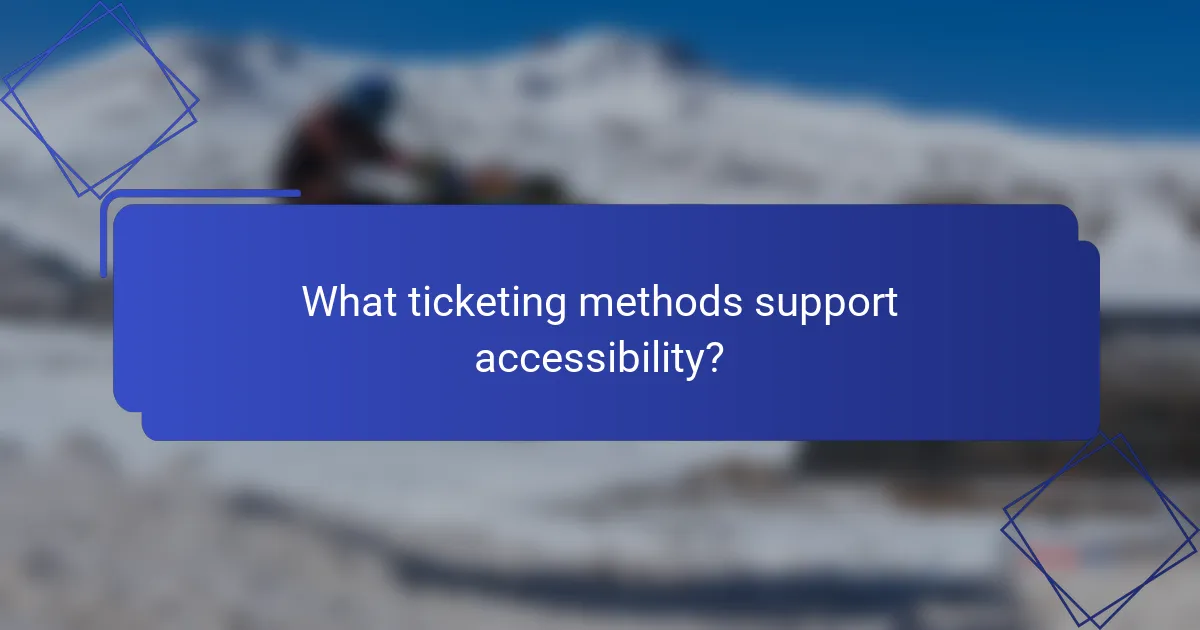
What ticketing methods support accessibility?
Accessible ticketing methods ensure that individuals with disabilities can easily purchase tickets and attend events. These methods include online purchasing options, companion tickets, and the ability to request special accommodations.
Accessible online ticket purchasing
Accessible online ticket purchasing allows individuals with disabilities to buy tickets through websites designed with accessibility in mind. This includes features such as screen reader compatibility, keyboard navigation, and clear visual layouts. Many ticketing platforms now comply with Web Content Accessibility Guidelines (WCAG) to enhance usability.
When using accessible online ticket purchasing, look for sites that provide options for adjusting text size, contrast, and alternative text for images. Additionally, check if the site offers customer support for users who may need assistance during the purchasing process.
Companion ticket options
Companion ticket options allow individuals with disabilities to bring a support person at no extra cost. This practice ensures that those who may require assistance can attend events comfortably. Many venues and events offer these tickets, but policies may vary, so it’s essential to verify details before purchasing.
When considering companion ticket options, check the specific terms and conditions of the event or venue. Some may require documentation of the disability, while others may have a straightforward process for obtaining companion tickets without additional fees.
Special accommodations requests
Special accommodations requests enable individuals with disabilities to seek tailored support for their event experience. This can include accessible seating, sign language interpreters, or other specific needs. It’s crucial to submit these requests well in advance to ensure proper arrangements can be made.
To make a special accommodations request, contact the event organizer or venue directly. Provide clear details about your needs and any relevant documentation. Many organizations are committed to inclusivity and will work to meet your requirements, but early communication is key to a smooth experience.
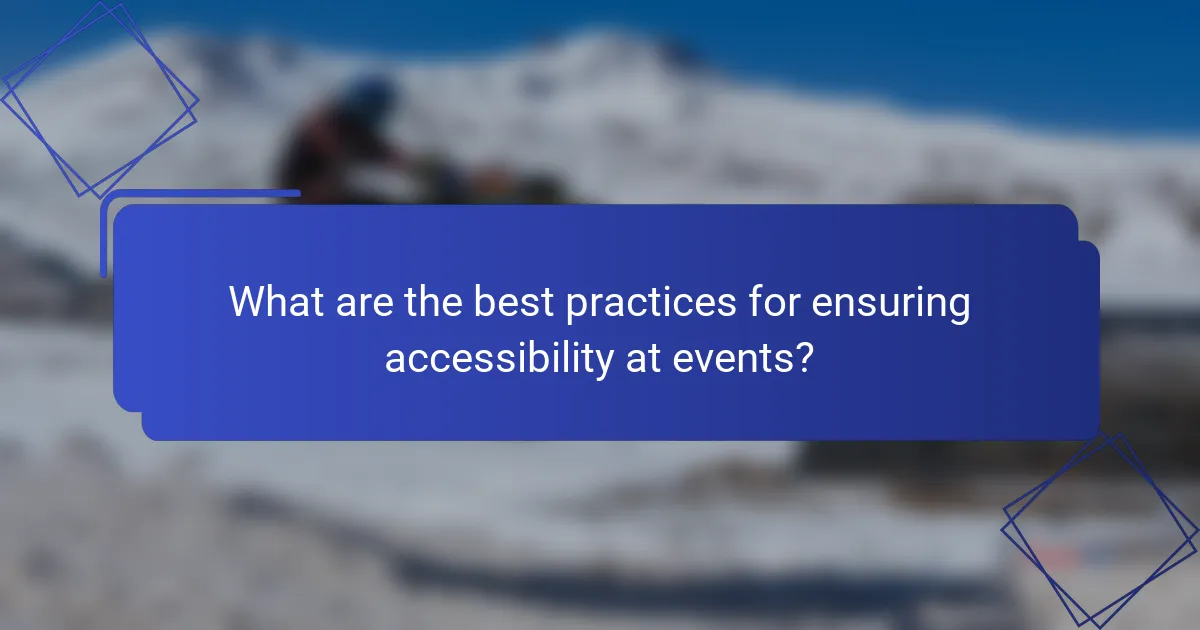
What are the best practices for ensuring accessibility at events?
To ensure accessibility at events, organizers should implement comprehensive strategies that include pre-event audits and staff training. These practices help identify barriers and equip staff to assist attendees with diverse needs effectively.
Pre-event accessibility audits
Conducting pre-event accessibility audits is crucial for identifying potential barriers that could hinder participation. These audits should assess physical spaces, such as entrances, restrooms, and seating arrangements, as well as digital platforms like websites and ticketing systems.
Utilize checklists based on established guidelines, such as the Americans with Disabilities Act (ADA) or the Web Content Accessibility Guidelines (WCAG). This ensures compliance and highlights areas needing improvement. For example, ensure that pathways are wide enough for wheelchairs and that information is available in accessible formats.
Staff training on accessibility
Training staff on accessibility is essential for creating an inclusive environment. Staff should understand the specific needs of attendees with disabilities and how to assist them effectively. This includes knowledge of mobility aids, communication techniques, and emergency procedures.
Consider organizing workshops or providing resources that cover best practices for interacting with individuals with various disabilities. Regular training sessions can help reinforce these skills and ensure that all staff members are prepared to provide support during the event.

How can technology enhance accessibility options?
Technology significantly enhances accessibility options by providing tools and services that cater to diverse needs. These advancements improve navigation, communication, and overall user experience for individuals with disabilities.
Mobile apps for navigation
Mobile apps designed for navigation can help users with visual impairments or mobility challenges find their way in unfamiliar environments. These applications often utilize GPS technology and provide audio instructions, making it easier to navigate public spaces.
When choosing a navigation app, consider features like real-time updates, offline maps, and compatibility with screen readers. Popular options include Google Maps and Apple Maps, which offer accessibility features such as wheelchair-friendly routes and voice-guided navigation.
Live captioning services
Live captioning services convert spoken language into text in real-time, making events and meetings more accessible for individuals who are deaf or hard of hearing. These services can be integrated into video conferencing platforms or used in live events to ensure everyone can follow along.
When implementing live captioning, select a service that offers high accuracy and quick response times. Options like Otter.ai and Google Meet’s built-in captions provide effective solutions, but it’s essential to test them beforehand to ensure they meet your specific needs.
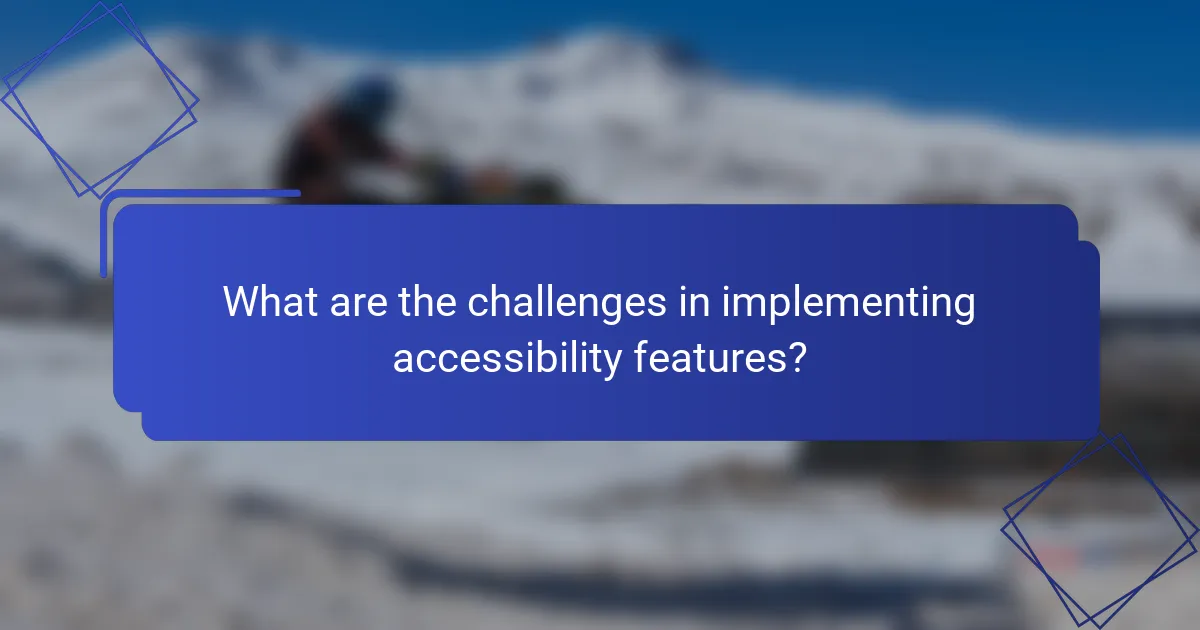
What are the challenges in implementing accessibility features?
Implementing accessibility features can be complex due to various challenges, including financial constraints and a general lack of awareness among event organizers. These obstacles can hinder the effective integration of necessary modifications to ensure inclusivity.
Cost of modifications
The cost of making modifications for accessibility can vary significantly based on the type and extent of changes required. Simple adjustments, like adding ramps or accessible signage, may range from a few hundred to several thousand dollars, while comprehensive upgrades, such as installing assistive technology, can reach tens of thousands.
Organizers should consider budgeting for accessibility from the start, as retrofitting existing venues can be more expensive. Seeking grants or partnerships with local organizations focused on disability rights can help mitigate costs.
Lack of awareness among organizers
Many event organizers may not fully understand the importance of accessibility or the specific needs of individuals with disabilities. This lack of awareness can lead to insufficient planning and inadequate resources allocated for accessibility features.
To address this, organizers should prioritize education on accessibility standards, such as the Americans with Disabilities Act (ADA) in the U.S. or similar regulations in other countries. Engaging with disability advocacy groups can provide valuable insights and guidance on best practices for creating inclusive environments.
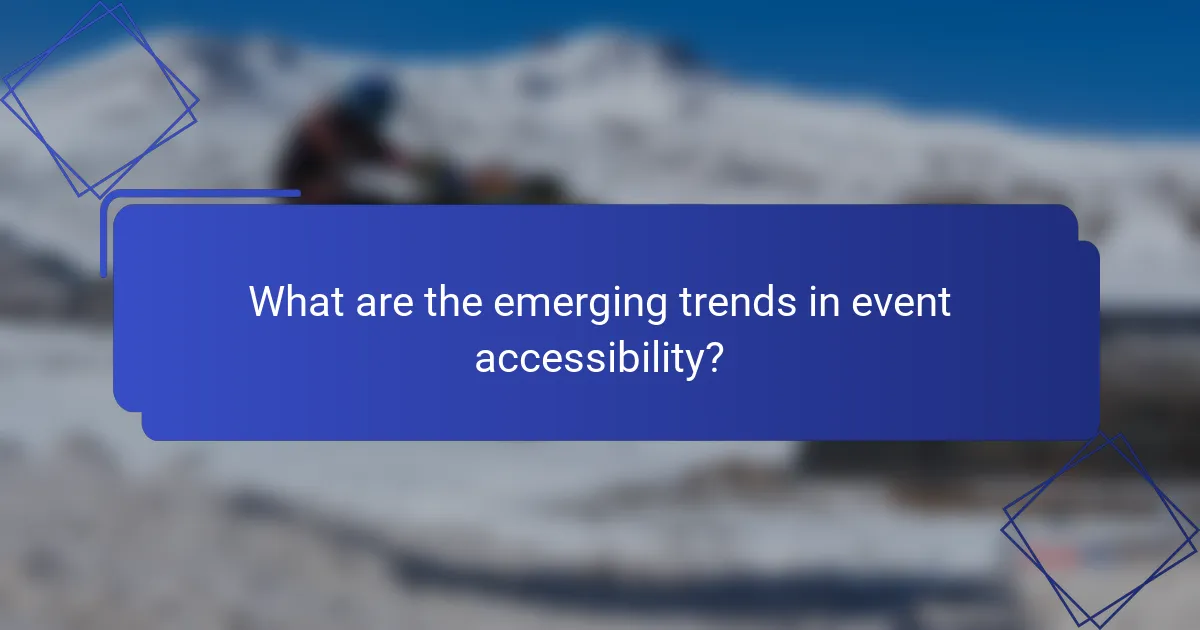
What are the emerging trends in event accessibility?
Emerging trends in event accessibility focus on enhancing participation for individuals with disabilities through innovative technologies and practices. Key developments include the integration of virtual events, improved physical accommodations, and the adoption of inclusive ticketing methods.
Increased use of virtual events
The rise of virtual events has significantly improved accessibility by allowing participants to join from anywhere, reducing the need for physical travel. This format is particularly beneficial for individuals with mobility challenges or those living in remote areas.
Virtual events often include features like live captioning, sign language interpretation, and screen reader compatibility, making them more inclusive. Platforms such as Zoom and Microsoft Teams have incorporated these tools to enhance user experience.
When planning a virtual event, consider offering multiple formats (e.g., live streaming, recorded sessions) and ensure that all materials are accessible. Always test the technology beforehand to avoid common pitfalls like audio issues or inaccessible links.
